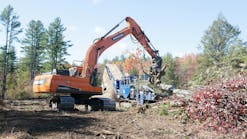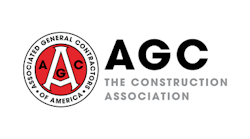From Rebuild SoCal Partnership - According to the Reason Foundation’s 25th Annual Highway Report, published last month, California’s state-controlled highway system has improvements to make when compared to other states across the country.
Reason Foundation has tracked the performance of the 50 state-owned highway systems since 1984. The 25th Annual Report, compiled using 2018 and 2019 data, measures the condition and cost-effectiveness of state-controlled highways in 13 categories, including pavement condition, traffic congestion, structurally deficient bridges, and spending per mile. For the second straight year, the report ranks California’s highways 43rd in the nation in overall cost-effectiveness and condition. The Golden State fared much better in the national ratings for bridge conditions, ranking 24th out of 50 states.
Compared to its neighboring Western states, the report finds California’s overall highway performance is much worse than Arizona (ranks 23rd overall), Nevada (27th), and Oregon (28th). However, the report notes that the top-performing states tend to be less populated and more rural. When compared to other highly populated states, California is outperforming states such as New York (ranks 44th overall) and New Jersey (ranks last, 50th).
In terms of road condition, the state ranks 44th in urban Interstate pavement condition and 41st in rural Interstate pavement condition. “If there’s a category that could be most quickly addressed by state leaders, it’s pavement condition. Prioritizing maintenance to ensure roads are repaired and maintained on-schedule should be an increased focus of state and metro transportation officials,” says Baruch Feigenbaum, lead author of the report.
With Southern California’s legendary gridlock, it’s no surprise that – based on 2018-2019 data – California ranked 45th in the country in terms of traffic congestion delays. The report found that the average California commuter spent 62.5 hours sitting in traffic delays during 2019. Some of the most congested trouble spots in Southern California are I-10 between Santa Monica and downtown Los Angeles; SR 91 between Orange and Riverside counties; and I-405 between I-10 and US 101.
When it comes to spending, California spent over $600,000 per state-controlled mile of highway in 2018. Some of those high costs can be attributed to the cost-of-living in the state, along with regulations that can increase project and labor costs. But the good news is that California’s total highway costs are less per mile than other densely populated states, including Florida, which spent over $800,000 per mile, and New Jersey’s nation-high spending figure of over $2 million per state-owned mile of highway.
The state’s percentage of bridges that are structurally deficient are also better than the national average, ranking 24th out of 50 states. Just over 7% of California’s bridges are structurally deficient, far better than states like West Virginia, Rhode Island, and Iowa where over 19% of bridges are structurally deficient.
“California needs to build on those bright spots and make progress in the overall cost-effectiveness and performance rankings. To do so, California needs to better prioritize high-value projects and ongoing maintenance to improve its pavement conditions, reduce its urban area traffic congestion, and reduce its administrative costs,” advises Feigenbaum.










